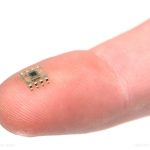
Traffic lights may soon be obsolete as semi-autonomous cars make driving through intersections easier
Saturday, September 09, 2017 by Frances Bloomfield
http://www.futuresciencenews.com/2017-09-09-traffic-lights-could-soon-be-obsolete-as-semi-autonomous-cars-weave-themselves-through-intersections-by-talking-to-other-vehicles.html

Are traffic lights set to become a thing of the past? They very well could be in a future where cars can navigate intersections without needing to stop. That’s the future envisioned by researchers from Singapore’s Agency for Science, Technology and Research (A*STAR). As new cars are being outfitted with semi-autonomous driving aids, they can also come equipped with the communication beacons and algorithms to make that future a reality.
“In the city of the near future, traffic lights would be complemented by and then replaced with a communication beacon,” said Bo Yang, lead author of the research report entitled: “Efficient intersection control for minimally guided vehicles: A self-organised and decentralised approach”. As reported by ScienceDaily.com, the system proposed by Yang and co-author Christoper Monterola would work like this: The beacon would collect and relay data on the speed and distance of vehicles approaching the intersection. The data would then be used by the system to design a safe pathway around those vehicles. Moreover, the concept of “adaptive repulsive force” ensured that cars would never come into contact with one another. The closer cars are to an intersection, the stronger the repulsion and the higher the speed adjustment to pass by one another safely.
Simulations yielded positive results. The communication beacons and algorithms proved to be effective even when tested against complex intersections. “In most cases, pre-emptive deceleration only slightly lowered the vehicle velocity, resulting in safe passage of each vehicle across the intersection without coming to a full stop at any point,” Yang stated.
Furthermore, the technology would be easy to implement. According to Yang, cars wouldn’t need to be fully autonomous to utilize this technology. All they would need is the ability to brake and accelerate on their own, which is already a feature of cars with smart-cruise controls. The driver would still be in charge of steering while the car handles its own speed through the intersection. And as smart cars continue to grow in pervasiveness, so too will this technology gain prevalence. The more cars there are on the road that can negotiate twists and turns without issue, the less use there will be for traffic lights. “Our simple algorithm only requires basic vehicle intelligence, but is also fully compatible with more intelligent vehicles that may come in the future,” noted Yang.
This new feature could not have come at a better time: the United States Department of Transportation (DOT) has proposed a rule requiring vehicle-to-vehicle communication technology in new cars. Vehicle-to-vehicle (V2V) systems in the United States more or less work the same as the system proposed by Yang: short-range radios would allow cars to send pertinent information to one another while on the road. According to TheVerge.com, the radios will offer a greater range than radars and camera sensors (300 meters or 984.25 feet, to be exact), and will have the added bonus of not being obstructed by other vehicles.
“Once deployed, V2V will provide 360-degree situational awareness on the road and will help us enhance vehicle safety,” stated Anthony Foxx, former United States Secretary of Transportation.
Though exciting in concept, we still need to consider that both technologies don’t quite fully account for other obstructions that could pop up on the road. What about heavy roadworks or ill-weather conditions? Or other humans who’ve completely placed their trust in their cars? Traffic lights are one thing, but unpredictable road conditions are another. If traffic lights are indeed going away, hopefully it won’t be for a long time. (Related: Babies born today will probably never experience the freedom of driving.)
Visit FutureScienceNews.com for more stories about the possible future that lies ahead of us.
Sources include:
ScienceDaily.com
ScienceDirect.com
TheVerge.com
Tagged Under: Tags: AI, freedom, future, science, semi-autonomous cars, semi-driverless cars, technology





